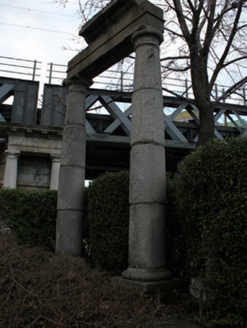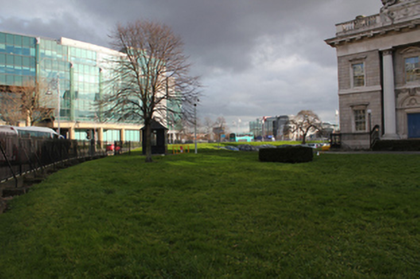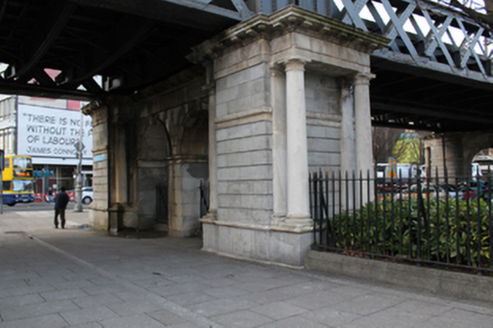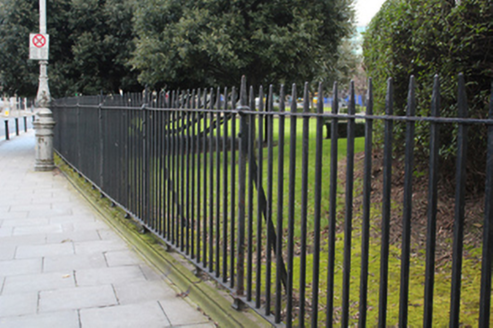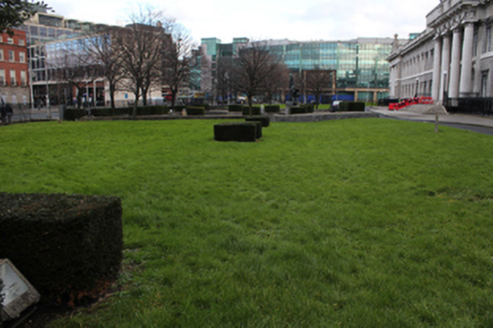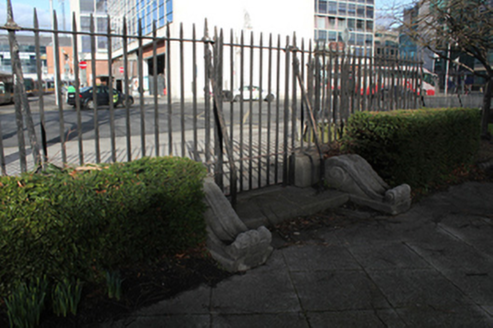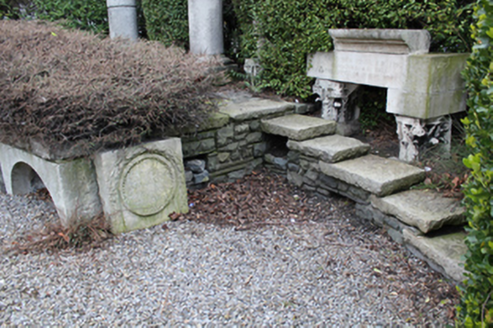Survey Data
Reg No
50011215
Rating
Regional
Categories of Special Interest
Architectural, Artistic, Social
Original Use
Gates/railings/walls
In Use As
Gates/railings/walls
Date
1945 - 1950
Coordinates
316379, 234630
Date Recorded
18/02/2014
Date Updated
--/--/--
Description
Gates and railings to Custom House, erected 1948, and flanking building to quayside and enclosing semi-circular garden to Beresford Place. Road to north, west and east sides of building, with grassy lawns elsewhere. Rectangular pool to middle of garden, opposite Beresford Place, set within paved forecourt, having bronze statue of dying soldier to south end of pool. Moulded granite plinth to cast-iron railings forms boundary to park, with double-leaf vehicular gates to southwest, west and northeast, with single-leaf pedestrian gate to north. Granite scrolls flanking pedestrian gate and placed at intervals along boundary and likely were corbels from Custom House. Loop Line railway bridge elevated over west edge of park and supported on classical double-arch structures having porticoes to short ends. Southernmost arched structure has railings to openings. Garden has some sculpture at northwest corner that was left over after rebuilding of Custom House after conflagration during War of Independence. Sculpture comprises royal crown, lintel stone, carved capitals, pair of columns with lintel, part of column, and stone bearing garland framing medallion having dates 1790 and 1920 in Roman numerals.
Appraisal
The garden to the Custom House constitute one of Dublin's lesser-known parks, a semi-public green space in a heavily built-up district. The garden provides a pleasant semi-natural setting for this grandest of Dublin's public buildings. Various items of sculpture in the gardens recall the destruction of the Custom House during the War of Independence in 1920 and in themselves now serve as follies. the Loop Line railway bridge which skirts the garden is supported on classical arched structures which compliment the grand eighteenth-century building while making an interesting contrast with the quite utilitarian nature of the bridge superstructure.
